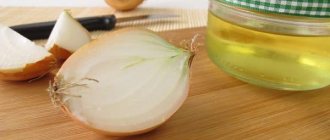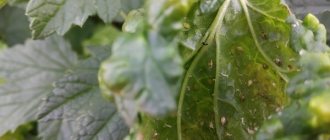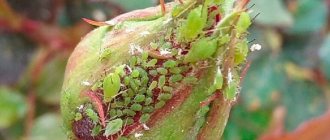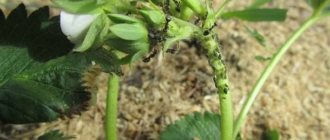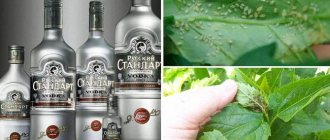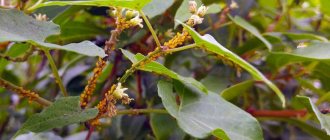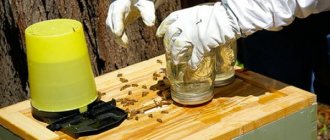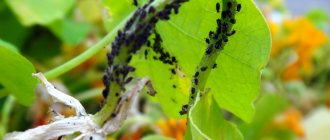Why spend money on ready-made preparations if some of them can be easily replaced with ordinary vinegar? This product is safe and effective - in a word, what every summer resident needs!
Vinegar is a liquid widely known throughout the world with a sharp, sour taste. Most often it is used in cooking as a seasoning and preservative. But that's not all that the famous product is capable of!
Thanks to its composition, vinegar has also found application in cosmetology, folk medicine, and even in gardening. Typically, table vinegar is used, which is a 3-15% solution of acetic acid. But there are other types of vinegar: apple, wine, alcohol, balsamic, etc.
We will mostly be talking about 9% table vinegar unless otherwise stated.
Vinegar for seed dressing
pinterest.com
Do you want to speed up seed germination by 2 times? Tired of germinating slow-to-germinate seeds? Then take 1 part vinegar and dilute it in 9 parts water. Moisten gauze or cloth with the resulting solution and wrap the seeds in it. Processing times are as follows:
- 24 hours – for seeds of parsley, dill, carrots, parsnips and other slow-growing plants;
- 12 hours – for seeds of tomatoes, peppers and eggplants;
- 7-8 hours – for seeds of cucumbers, pumpkins and zucchini.
Then dry the seeds a little and sow. Friendly shoots will not keep you waiting!
- Preparing seeds for sowing: what do you need to remember?
Prepare seeds for sowing correctly!
Vinegar for pest control
Vinegar will protect plants from the Colorado potato beetle, aphids, cruciferous flea beetles, cabbage and cutworm caterpillars, and pest flies. It is most effective to treat plantings with it at the beginning of the summer season, when their number does not yet exceed the permissible limits. Insects will be forced to leave in search of more favorable living conditions. Also, vinegar solution can be used as a prophylactic. The pungent smell will repel pests and prevent them from laying eggs on the leaves.
Vinegar against the Colorado potato beetle. Dilute 100 ml of vinegar in 10 liters of water with the addition of 200 g of mustard powder. On a dry, windless day, spray the potatoes and soil in the beds. The drug is enough to process at least 1 hundred square meters.
Vinegar against aphids. Dilute 150 ml of vinegar in a bucket of water and spray the affected plants.
Vinegar against cruciferous flea beetles, cabbage worms, cutworms. Dilute 30 ml of vinegar in 8 liters of water and sprinkle on cabbage, radishes, radishes, and daikon.
Vinegar against slugs. Dilute 100 ml of apple cider vinegar in 300 ml of water and spray the affected plantings.
In 1 tbsp. contains 15-16 ml of vinegar; sportobzor.ru
Apply treatments every 3-4 days until the pests disappear. Also, do not forget to attract birds and beneficial insects to the site.
Vinegar against ants. Dilute 1 liter of vinegar in 1 liter of water and water the anthill.
Take precautions when working with vinegar. Wear gloves and a gauze bandage when spraying to protect against acid fumes.
What kind of insect is an aphid, and how is it dangerous for cucumbers?
Aphids are a superfamily of insects from the order Hemiptera . More than 4,000 species are known, of which almost 1,000 live in Europe. The appearance and spread is possible with any method of growing cucumbers: in spring in greenhouses and greenhouses, in summer in open ground.
Favorable conditions for the reproduction of parasites are regions with a humid, warm climate . However, pests are resistant to weather conditions: they can exist and reproduce in a wide range of temperatures and at different air humidity.
Aphids feed on plant sap, infecting all its above-ground parts: flowers, leaves, ovaries, fruits, and are capable of spreading viruses and causing pathological formations (galls) in plants. Galls weaken the plant, slow down fruiting, and can lead to its death and, accordingly, loss of harvest.
For reference. You can protect your plantings by choosing the right cucumber variety that is resistant to pests and diseases.
What kind of aphid infects cucumbers?
The main pest of cucumbers is the melon or cotton aphid . This is a small insect, body length is 1-2 mm. Some individuals reach 5 mm. The species contains winged and wingless forms. The body color is different, ranging from light yellow to rich green, almost black. Each individual has a proboscis with which it pierces the surface of leaves and shoots.
The development of melon aphids begins in the spring , when the larvae hatch from eggs laid on the host plant in the autumn. The larva feeds on the sap of the plant, and after molting it begins to reproduce. During the summer, one female reproduces more than 10 times; more than 500 individuals of winged and wingless forms can appear from her. In autumn, winged females fly to a weed plant, where they begin laying eggs for the winter.
Interesting. Insects lead a sedentary lifestyle, but move quite quickly. Winged individuals can travel long distances and create colonies in new places.
Vinegar for attracting pest butterflies
To save the garden from the invasion of caterpillars, catch butterflies: codling moth, hawthorn moth, leaf roller, etc. To do this, mix 1 liter of water and 50 ml of apple cider vinegar, then pour the bait into a cut-off plastic bottle or waste container. Butterflies will flock to the smell and drown in the liquid. There is no need to cover the top of the container with anything; insects will not fly out of the trap.
It is better to make several baits and hang them throughout the garden in inconspicuous places.
As they fill up, approximately every 10 days, check and empty the traps and add fresh solution. At the end of the season, you will notice that the crop will remain almost untouched. And all this without the use of chemicals!
- What butterflies threaten your harvest - photos and descriptions of pest butterflies
Now you can easily identify pest butterflies and their caterpillars in your area, and also learn how to fight them!
Top dressing
Some plants love an acidic environment. These include blueberries, hydrangea, azalea, heather, gardenia, viburnum and lilies of the valley. If you grow such crops on your site, then feed them with vinegar.
Pour 10 liters of water into a watering can. Add a liter of apple cider vinegar to it. Mix the liquid well. Water the plant with the prepared mixture at the root. Make sure that the liquid does not get on the green parts of the plant.
This watering should be done every 7 - 10 days. The procedure begins a month before the buds appear. After flowering begins, watering with vinegar solution is stopped.
Vinegar against fungal diseases
Garden and vegetable crops often suffer from fungal diseases. And if the summer turns out to be cold and rainy, the harvest is at risk! But few people know that acetic acid can reduce the activity of fungi. In an acidic environment they die and cannot reproduce. Tomatoes, cucumbers, zucchini, ornamental and fruit bushes, as well as trees can be treated with a vinegar solution. This is the recipe.
Dilute 120 ml of vinegar in 10 liters of water and spray the plants.
Treat affected plants every 5-7 days. The product can also be used to prevent powdery mildew, late blight, black spot and other diseases. In this case, carry out regular treatments every 2 weeks, with the exception of the flowering period.
Plant treatment
Bacterial diseases on the surface of the stems and bark of plantings are not a rare occurrence. Affected areas must be removed to prevent the spread of the disease. And the branches and stems of plants growing nearby that have not succumbed to the influence of harmful microorganisms should be treated with water and vinegar. To 3 parts of water add 2 parts of acid.
The acidic properties of the essence have a depressing effect on fungal spores. Fungistatic and antimicrobial effects ensure the death of the pathogenic colony.
5 varieties of Chinese long cucumbers that gardeners have already appreciated
Vinegar for weed control
The caustic composition of vinegar allows this product to be successfully used in weed control. Just a few treatments and they will disappear from the site for a long time. Boil a liter of water and add 75 ml of vinegar, 40 g of salt and 1 tbsp. liquid soap. Cool the product before spraying. Young weeds die especially quickly after treatment. Mature plants can survive from the root system, so treatments should be repeated as needed.
Spray on a dry, windless day, making sure that the solution does not get on the crops.
Vinegar for mice in a country house
Mice reproduce quickly and are incredibly omnivorous. But they can’t stand the smell and taste of vinegar. There are two ways to scare them away with this remedy. The simplest one: place open containers of vinegar in the room. A little more complicated - make balls of flour and vinegar and place them in mouse habitats. You will soon notice that rodent activity has decreased.
- How to get rid of mice forever in your house, apartment and country house
What to do if there are mice in the house? Find out now.
Causes of defeat
The appearance of aphids on cucumbers may be due to favorable climatic conditions in the region (air temperature +22-23 ° C, humidity at 80%), failure to maintain the planting density of cucumbers, and the presence of weeds where parasites lay overwintering eggs.
Another reason for the appearance of aphids on cucumbers is ants . They contribute to the spread of pests, as they feed on their sweet liquid secretions and protect colonies of pests from insect predators. For the winter, they hide the aphids from the cold in an anthill, and in the spring, with the onset of warmth, they transfer them to the plant.
Vinegar for determining soil acidity
yousense.info
Soil acidity is one of the most important factors for obtaining a good harvest. There are many ways to define it. You can do this quickly and inexpensively using vinegar.
For the experiment, take soil not from the surface, but from a depth of about 30 cm. Place the soil on a film or board and pour in vinegar. Watch the reaction. If bubbles appear, the soil is alkaline, a slight hiss is neutral. If there is no reaction to vinegar, the soil is acidic and it is worth working on its deacidification.
- How to deoxidize the soil on the site - useful tips for gardeners and gardeners
Acidic soil on a site can destroy many plants and negate all efforts to grow them. How to correct soil acidity in beds and gardens?
How to understand that cucumbers are affected by aphids
At the initial stage, it is not easy to determine whether a plant is affected by aphids . However, pests multiply quickly and in a short time, if plant protection measures are not taken, they completely cover the ovaries, flowers, and young shoots, destroying part of the seedlings.
To preserve the harvest and prevent the proliferation and spread of aphids, it is necessary to regularly inspect the plantings for the presence of pests.
It can be useful:
Why boric acid is useful for cucumbers and how to use it
Why do you need to treat cucumbers with brilliant green and how to do it
You can determine that cucumbers are affected by melon aphids by external signs:
- leaf curling;
- the appearance of yellow spots on the leaves, their complete or partial yellowing;
- massive leaf fall;
- slowing down plant growth;
- sticky drops on leaves and stems;
- the presence of an anthill nearby or ants scurrying along the stems;
- accumulation of small parasites on the spread of curled leaves.
Vinegar in country life
At the dacha there is always something to wash and put in order, but there is not enough time for everything. Vinegar will come to your aid as it allows you to quickly clean a variety of stains. Vinegar is usually diluted in water in a ratio of 1:1 or 1:2, depending on the degree of contamination. Sometimes they are used in pure form, including for soaking. Try cleaning with vinegar:
- rusty garden tools;
- kitchen utensils;
- plumbing;
- garden paths, veranda, porch;
- garden furniture;
- stains on clothes.
Vinegar will also help clean stains from berries and vegetables on your hands and remove unpleasant odors from the refrigerator, trash can or cabinet - just rinse all surfaces with it.
Vinegar - an ambulance for a summer resident
At your dacha, you should always keep a first aid kit with ready-made medications. But sometimes you don’t have them on hand, and then ordinary vinegar will help out!
Pulled a muscle? Dissolve 1 tbsp. vinegar in 100 ml of water, moisten a piece of cloth with the liquid and apply to the sore spot for 30 minutes. The pain will subside. If you have a sore throat, prepare the following solution: add 1 tsp to 100 ml of water. apple cider vinegar and gargle every 1.5 hours.
After summer work, the skin of the hands often suffers. To get rid of cracks, mix your favorite hand cream with an equal amount of apple cider vinegar. Every evening before going to bed, rub the resulting product into your skin.
You can try some of the described methods of using vinegar now. Others will only be useful next season. All that remains is to personally check their effectiveness. Or maybe you have your own secrets for using vinegar in the country? Share in the comments!

